Prepared January 28, 2025 The 2024 wildfire season in the United States was characterized by continued growth of extensive fire activity and costs. Per data from National Interagency Fire Center (NIFC), 42,280 wildfires burned 9.4 million acres, an area 12 times the size of Yos … Suppression costs rose to $4.8 billion, a 250% increase in just the past decade, highlighting the growing complexity and expense of firefighting efforts. Moreover, 2025 began with the devastating Southern California fires, which have claimed 28+ lives, destroyed over 12k structures, and resulted in estimated economic losses exceeding $250B. Extreme weather conditions, characterized by drought, very low humidity, and strong wind fueled every megafire–fires over 40k acres– and drove regional wildfire surges. Mitigating wildfire risk demands comprehensive and adaptive strategies, including enhanced fire detection, proactive land management to remove extant fuel on the ground, infrastructure hardening, community education, and climate change mitigation. Notably, controlled burns reveal stark regional disparities: while no Western state conducts more than 250K acres of prescribed burns annually, Southeastern states like Florida and Georgia exceed 1M acres each year, with only 48K in wildfire losses last year. While the Western region faces some significant hurdles in burn execution, this disparity highlights both the feasibility and the efficacy of a strong prescribed burn program. Our detailed recap of the 2024 and early 2025 wildfire seasons highlights critical trends, key incidents, and the urgent need for transformative solutions to combat the intensifying wildfire crisis. 1,963 large fires–those exceeding 100 acres– were responsible for over 99% of acres burned and 97% of suppression costs. Among these, 39 megafires (fires over 40,000 acres) burned 56% of the total acreage, demonstrating the outsized impact of these massive fires. Smoke crosses a road the afternoon of February 29, 2024. Photo: Unknown // Inciweb The Smokehouse Creek Fire, the largest wildfire of the year and in Texas history, burned over 1 million acres. Together with the Windy Deuce Fire, these blazes destroyed 130 homes, claimed two lives, and caused an estimated $4.5 billion in long-term economic damages. The alleged cause was downed power lines from a broken utility pole, due to inadequate maintenance. The fires were fueled by a perfect storm of extreme conditions, including gusting winds up to 50 mph, exceptionally low humidity, and prolonged drought. CALFIRE clears containment lines on the outskirts of the Park Fire. Photo: CALFIRE July 25,2024 Burning 430K acres, the Park Fire in NoCal was the second-largest wildfire of the year and the most expensive, costing $350 million. The fire grew explosively to roughly 45K acres within hours and over 350K acres in three days, destroying over 700 structures and forcing thousands to evacuate. The fire was sparked by alleged arson involving a burning car and exacerbated by extreme heat, very low humidity, strong winds, and dry vegetation – July was California’s hottest month on record, with temperatures often exceeding 100 degrees. Occurring just miles from the 2018 Camp Fire in Paradise, the deadliest in state history, the fire was another grim reminder of California’s ever present wildfire danger. By Marcus Johnson, Vale District of the Bureau of Land Management – Durkee Fire on InciWeb, Public Domain, Link The Durkee Fire in Oregon rounds out the top three largest fires of the year. Sparked by lightning in mid-July, the fire burned nearly 300K acres and produced pyrocumulonimbus clouds, creating its own weather system and complicating firefighting efforts. The fire’s rapid growth was driven by the same extreme weather as the Park Fire, including record-setting high temperatures, extremely dry fuels, and gusting high winds. Oregon saw 12 of the nation’s 39 megafires this year, all in this time span, costing $480M and burning 1.6M acres in total. Wildfire activity in 2024 followed a strikingly regional progression, driven by prevailing weather and seasonal conditions. Early in the year, grass-fueled megafires broke out in Texas, Oklahoma, and Nebraska due to extreme winds and low humidity in the Great Plains region. By June, activity shifted to Alaska, where fires, though vast, posed minimal risk given the state’s low population density. In July, fire activity intensified across the West and Northwest, with megafires igniting in Oregon, Washington, California, and Idaho due to a much hotter-than-normal summer and an abundance of fine fuels left behind by an unusually wet winter and spring. Late August and September saw July followed by continued heatwaves across the region, leading to five megafires in Wyoming, two in SoCal and others in Idaho and Oregon. Wyoming, typically less affected, saw grassland fires driven by strong winds and dry fuels. The fire season extended into December again this year with the Franklin Fire in Malibu burning over 4000 acres and causing over 20,000 residents to evacuate. These five states accounted for 66% of all acres burned nationwide, totaling 5.6 million acres. In a rare shift, the Northeast and Mid-Atlantic regions experienced heightened wildfire activity in October due to severe drought, including the Jennings Creek Wildfire in the NYC metro region which burned over 4,000 acres. New Jersey reported over 300 wildfires this fall, a tenfold increase, and Connecticut saw over 150 fires, after just five the previous year. This unprecedented wildfire activity highlights the growing impact of climate change on urban and suburban areas traditionally less prone to such events. Roughly 57K acres have been burned across more than 25 major wildfires in Southern California. At least 28 people have lost their lives and more than 12K structures have been destroyed – for comparison, about 700 structures were destroyed in the Park Fire, 2024’s most destructive fire. The situation remained critical for nearly all of January with red flag warnings in effect for much of the region due to drought, low humidity, warmer than average weather, and hurricane-force Santa Ana winds. The 2025 outlook indicates another year of extreme wildfire activity. The fire season is expected to continue with a transition from El Niño to La Niña conditions early this year, typically leading to more storms in the northern US and warmer and drier conditions in the southern US. The statistics for 2024 are emblematic of an era in which wildfires are more severe and expensive than ever. As the new year begins, the urgency for transformative wildfire management solutions has never been greater. Adaptive and mitigating strategies to safeguard lives, property, and natural landscapes against an increasingly volatile future are in development, require more widespread adoption, and include: Advanced technologies include remote sensed monitoring, AI-powered risk and behavior prediction models, and improved firefighting equipment such as Very Large Airtankers (VLATs) and Water Scoopers that optimize delivery of fire retardant and water. Implementing strategies like controlled burns, grazing, and vegetation clearing reduces fuels on the ground, fire risk and the potential for catastrophic wildfires. Moreover, much of the US forestland is fire-adapted, meaning it depends on periodic fires for regeneration and healthy ecosystem maintenance. Increased wildfire severity and cost demand increased adoption of hardening strategies to protect homes and critical, fire-prone infrastructure like electrical lines, including vegetation clearing, use of fire-resistant materials and design, and other infrastructure preparedness. Fostering a culture of preparedness informs, empowers, and can generate the support required to implement mitigating strategies. Data sharing and transparency for real-time wildfire data and prevention efforts is critical to that effort. A long-term strategy to invest in mitigating the root causes of increasing wildfire frequency and severity will encompass initiatives to both reduce emissions as well as drawdown extant carbon is needed. The 2022 Inflation Reduction Act provides for roughly $370B over 10 years towards this goal [parts of this funding are frozen as of 1/29/2025] and VC investment was $28B in 2023. Returning to a regimen of restorative land management policies is critical, including a reversal of total fire suppression policies, the use of prescribed fire, mechanical thinning, and other fuel management activities. These practices reduce wildfire risk by removing fuels on the ground, enhance forest health by favoring fire-resistant trees and fire-adapted flora and fauna, and mitigate climate change. Prescribed burn acreage has doubled over the past five years according to NIFC’s data, a promising trend. The Southeast is a leader in this effort, with Florida and Georgia collectively conducting prescribed burns on over 3M acres in 2024 while limiting wildfire losses to just 48K acres. By contrast, California reported only 155K acres of prescribed burns in 2023, per the state’s Prescribed Fire Incident Reporting System (PFIRS) – notably, prescribed burn and land management reporting is known to be notoriously incomplete, underscoring the need for increased reporting and transparency. While California faces bigger hurdles in burn execution because of its long history of total fire suppression, more complex terrain, and regulatory and operational requirements along with community hesitance, this disparity highlights both the feasibility and the efficacy of a strong prescribed burn program. Scaling up these practices is vital to building wildfire resilience and protecting communities in the face of a changing climate. Citations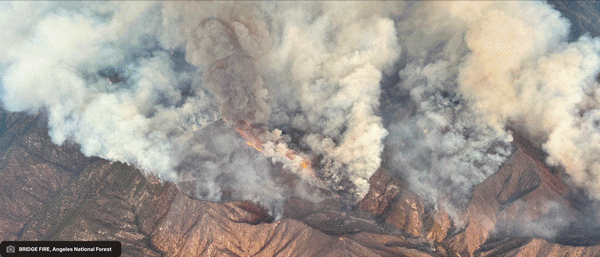
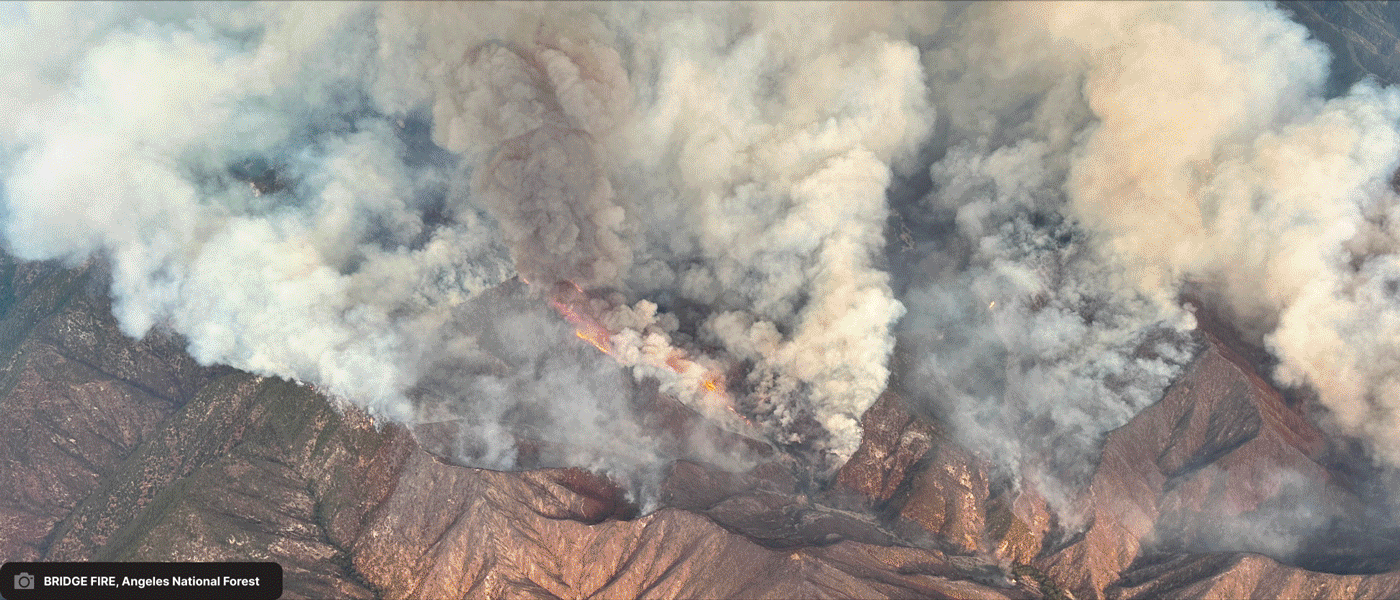
The 2024 wildfire season in the United States was characterized by continued growth of extensive fire activity and costs. Per data from National Interagency Fire Center (NIFC),42,280 wildfires burned 9.4 million acres, an area 12 times the size of Yosemite, marking a 40% increase from a decade ago and a fourfold rise from 40 years ago.
Acreage burned in wildfires by year (source NIFC).
Large fires drove cost and acreage burned
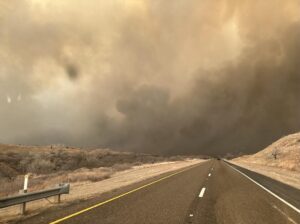
Smokehouse Creek & Windy Deuce Fires, Texas

Park Fire, California
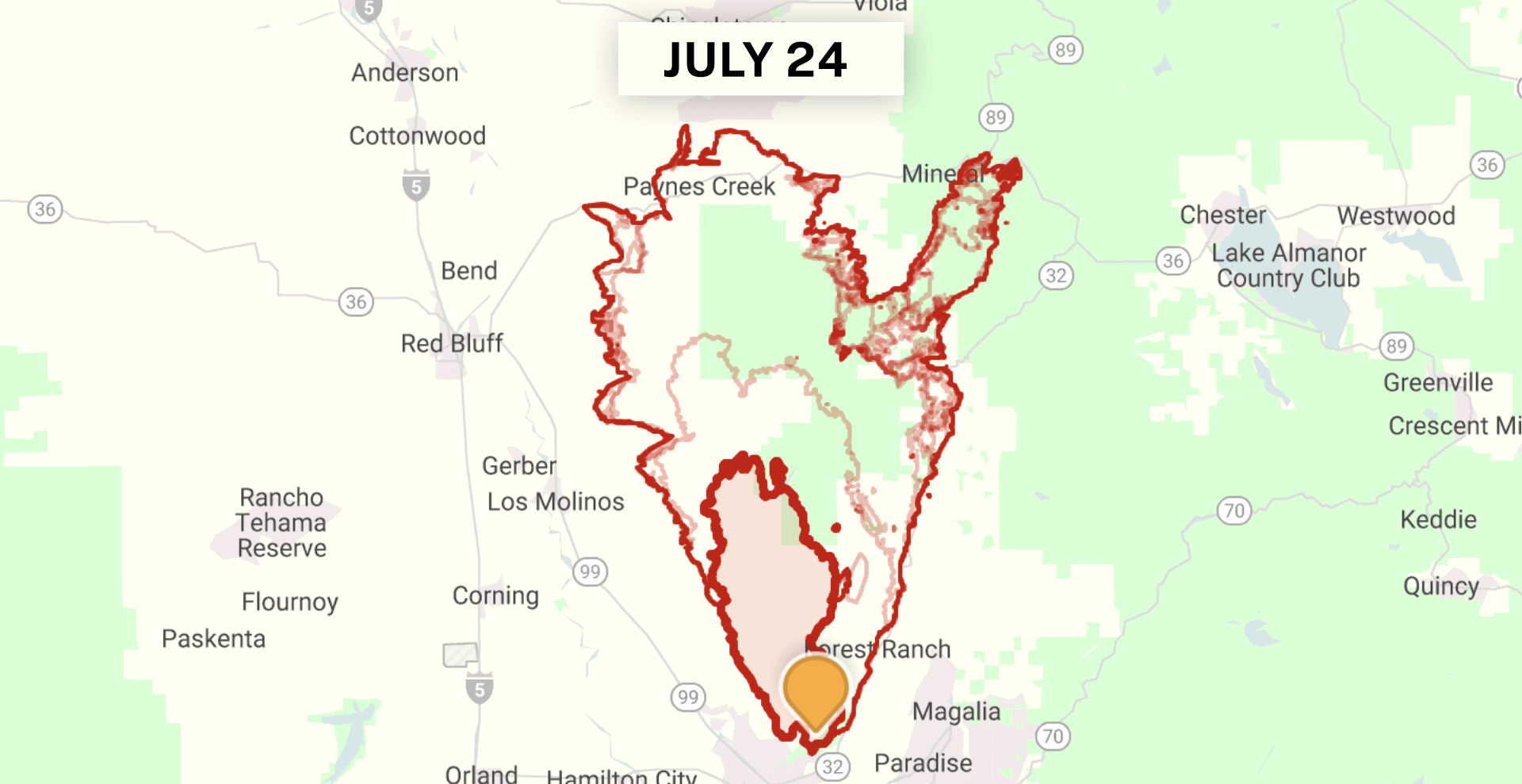
Figure. Fire perimeters and progression for the Park Fire.
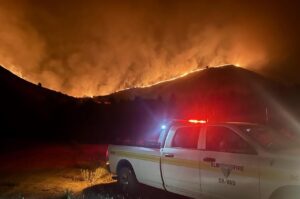
Durkee Fire, Oregon
Megafire activity followed extreme weather
2024 Megafires
Wildfire Name Size (In Acres) Est. Cost Cause State Start Month
Betty's Way 69,810 $602,948 Undetermined Nebraska February
Smokehouse Creek 1,054,153 N/A Human - power Texas February
Windy Deuce 143,302 N/A Human - power Texas February
Catesby Fire 89,688 $1,300,000 Human Oklahoma February
McDonald 153,729 $3,477,200 Natural Alaska June
Midnight 50,550 N/A Natural Alaska June
Grapefruit Complex 89,011 $5,920,600 Undetermined Alaska June
Falls 151,689 $67,814,990 Human Oregon July
COW VALLEY 133,490 $18,000,000 Undetermined Oregon July
LONE ROCK 137,222 $33,000,000 Undetermined Oregon July
DURKEE 294,265 $30,800,000 Natural Oregon July
Boneyard 49,716 $3,534,841 Natural Oregon July
Battle Mountain Complex 183,026 $86,240,000 Undetermined Oregon July
Monkey Creek 115,269 $86,240,000 Undetermined Oregon July
Swawilla I 53,462 $19,008,764 Natural Washington July
0501 PR CRAZY CREEK 86,968 $38,300,735 Natural Oregon July
Telephone 54,005 $11,119,266 Natural Oregon July
BIG HORN 51,569 $3,200,000 Undetermined Washington July
BADLAND COMPLEX 54,617 $8,500,000 Undetermined Oregon July
RETREAT 45,601 $25,029,000 Human Washington July
PARK 429,603 $351,300,000 Undetermined California July
BOREL 59,288 $42,618,236 Undetermined California July
WAPITI 129,063 $76,544,674 Natural Idaho July
HOLE IN THE GROUND 98,855 $1,500,000 Natural Oregon July
PADDOCK 187,185 $6,300,000 Natural Idaho August
Warner Peak 65,866 $10,708,232 Natural Oregon August
NELLIE 48,196 $63,200,000 Natural Idaho August
MIDDLE FORK COMPLEX 61,496 $63,200,000 Undetermined Idaho August
House Draw 174,547 $6,000,000 Natural Wyoming August
Remington 196,368 $5,800,000 Undetermined Wyoming August
Flat Rock 52,421 $2,900,506 Undetermined Wyoming August
RAIL RIDGE 176,661 $85,121,274 Natural Oregon September
Red Rock 71,122 $43,204,714 Natural Idaho September
LAVA 97,585 $35,500,000 Natural Idaho September
LINE 43,978 $142,627,603 Undetermined California September
BRIDGE 56,030 $74,000,000 Undetermined California September
Pack Trail 89,930 $68,156,679 Natural Wyoming September
ELK 98,352 $56,557,267 Undetermined Wyoming September
Williams Co wildland fire 88,934 N/A Human North Dakota October
Figure. The 2024 megafires (>40,000 acres), showing acres burned, cost, and start month.
The 2025 fire season began with deadly LA fires
2025 began with the devastating fires in Southern California including the Palisades, Eaton and Hurst fires.
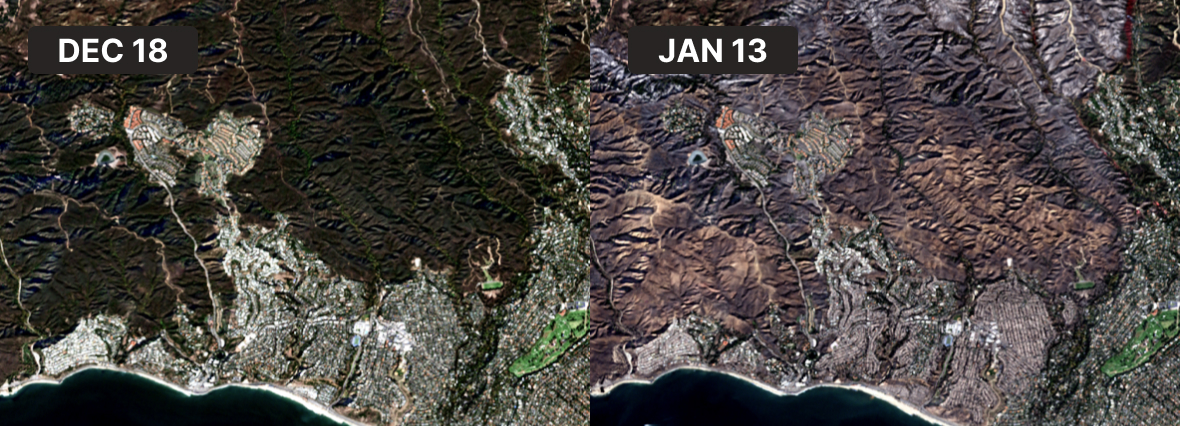
Figure. Sentinel-2 satellite images depicting the Pacific Palisades region before and after fire start.
Combating Escalating Wildfire Threats
Enhanced fire detection and suppression techniques
Proactive land and ecological management
Building and infrastructure hardening
Community awareness and education
Climate change mitigation
Increased land management and reporting is critical to reduce wildfire riskFigure. Prescribed burn acres from 2015-2024 in FL, GA, CA.
Written with the help of Perplexity.AI, ChatGPT and Gemini.